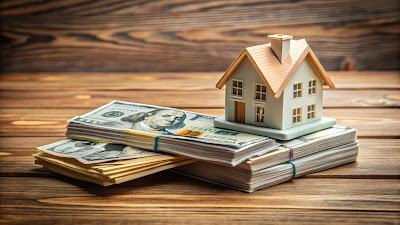What Is A Down Payment?
A down payment is the initial, upfront payment you make when purchasing a home. This money comes out of pocket from your personal savings or eligible gifts.
Traditionally, a mortgage down payment is at least 5% of a home's sale price. House down payments are often, but not always, part of the normal home buying process. If a buyer put 10-20% down, they may be more committed to the home and less likely to default. If there is more equity in the property, the lender is more likely able to recover its loss in the event of foreclosure.
Further, putting 20% down on your home when you purchase can help show the bank — and yourself — that you're financially ready to purchase a house. A down payment on a house also protects you as the buyer. If you want to sell your home and the market drops, you might owe more on your property than it's worth. If you made a larger down payment when you purchased your house you may break even, or possibly make money when you sell.
Types Of Loans
You can choose from a wide variety of loans. However, the four common types of mortgage loan programs are:
1. Conventional Fixed-Rate Mortgages
With this type of mortgage, you keep the same interest rate for the life of the loan, which means the principal and interest portion of your monthly mortgage payment stays the same. These types of loans typically come in 10, 15, 20 or 30-year terms.
If you put less than 20% down on a conventional loan, you may need to pay private mortgage insurance (PMI). Opens overlay. The most common way to cover this cost is to pay for it in a monthly premium that's added to your mortgage payment. PMI usually equals 1% of your loan balance per year. Many lenders offer conventional loans with PMI for down payments as low as 5%, and some as low as 3%.
2. Conventional Adjustable-Rate Mortgage (ARM)
Unlike a fixed-rate loan, an adjustable-rate mortgage has an interest rate that can go up or down based on market conditions. The down payment is typically between 3 and 20%, and may require PMI for buyers who put down less than 20%.With an ARM, the initial rate is often lower than a fixed-rate loan. However, the interest rate may go up over time.
3. Federal Housing Administration (FHA) Loan
This is a type of loan insured by the federal government. An FHA loan is ideal for first-time buyers with less-than-perfect credit scores and offers down payments as low as 3.5%. Unlike conventional mortgages, mortgage insurance includes both an upfront amount and a monthly premium.
4. VA Loans
This type of loan is only available for U.S. military veterans and active duty service members.VA loans are funded by a lender and guaranteed by the Department of Veterans Affairs. The primary benefit of pursuing this type of loan is it may not require a down payment and has no monthly mortgage insurance.
Benefits of putting more than 20% down...
If you're able to do so, you may want to consider putting down a payment that's larger than 20%. Here are some of the benefits:
- Lower monthly payment due to no mortgage insurance and smaller loan amount
- Less interest paid over the life of the loan
- More flexibility if you need to sell on short notice


No comments:
Post a Comment